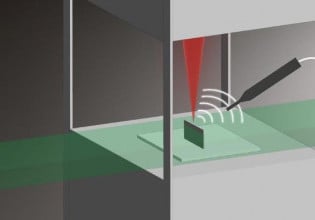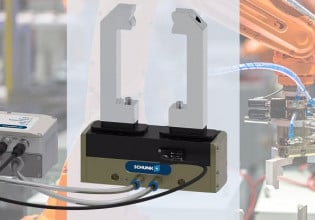Finally: A Complete IO-Link System Designed for Safety Applications
Safety systems just became easier to develop, now that Pilz has released an entire suite of network and field devices that use the common IO-Link protocol, known for ease of system configuration.
Safety devices, such as remote input and output modules, robot communication, and servo signals have been utilizing CIP safety or ProfiSafe communication protocols for quite some time now. Advanced safety devices typically have web-based interfaces or additional software required to commission or configure, while most remote I/O modules require additional nodes within the field.
PILZ Releases Safe IO-Link
With safety-rated IO-Link masters and devices, designers will no longer be required to put remote I/O racks in the field to accommodate safety devices, allowing integration teams to configure devices directly within the PLC code. Now, thanks to a recent innovation by Pilz, safe IO-Link devices can be connected directly to a special IO-Link master which can communicate to the PLC over the industrial protocol of your choice.

Safe IO-Link master device. Image used courtesy of Pilz
Complete Safety Networking
In every IO-Link network, a master exists to facilitate the proper flow of signals between field devices. The master is the interface from the industrial protocol to the field-level devices. Up until now, only standard-duty devices could be connected to the master, such as proximity sensors, actuators, or limit switches.
Now, with the PDP67 from Pilz, safety devices such as the PSENopt safety light curtain or the PITgatebox pushbutton unit can all be connected and interfaced through the end user’s choice of protocol.
Typically, these devices are hardwired to safety input modules or a safety PLC/relay, requiring extensive cables, labeling, and hours of wiring and troubleshooting. The PDP67 allows this safe remote I/O, as well as allowing non safety-rated devices to work alongside. Even devices that use OSSD technology for their safe communication can be used with the PDP67 master. Not only do you get the ability to communicate with your safety devices, but you also get all the diagnostic and parameter configuration ability that comes with IO-Link technology.

Safety light curtains. Image used courtesy of Pilz
IO-Link Safety Sensors
An advantage of IO-Link is the ability to configure field devices and save that configuration in the PLC code, allowing for a faster recovery time when devices need to be replaced. In most conventional digital sensors, the configuration is saved locally in the field device itself, so when the device needs to be replaced, the engineer will need to configure the new device once again. Pilz safety sensors typically have many configuration parameters which results in fewer part numbers to keep track of. Equipment manufacturers can easily standardize components and configure them to fit the application.

Remote safety I/O modular controls. Image used courtesy of Pilz
IO-Link Safety Connection Technology
IO-Link Safety transmits data independent of the regular data on the same protocol. Even though this data is isolated, it is transmitted on the same unshielded industrial Ethernet cable. This saves time and money during the installation phase.
Using IO-Link safety devices, diagnostic data can be read directly in the PLC or displayed on the HMI. For example, light curtains transmit beams of light from a sending unit to a receiving unit. One of the biggest headaches with light curtains is aligning both the sending and receiving units. With an IO-Link safety light curtain, such as the PSENopt, the beam strength can be seen within the diagnostic data.
Time-saving benefits, like these adjustment procedures, can greatly reduce troubleshooting time and maintenance costs, ensuring that safety systems are able to provide the required hazard-protection layer, but still allow easier and more efficient system configuration practices.






